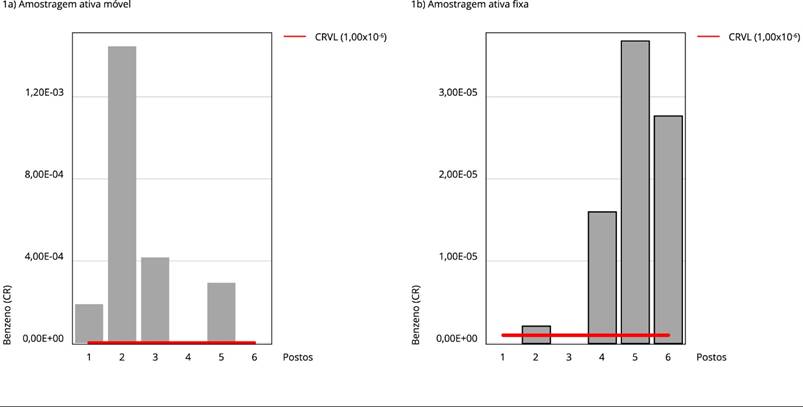Gasoline is a complex mixture of substances, including aromatic hydrocarbons such as benzene, toluene, ethylbenzene, and xylenes (BTEX). These compounds are emitted into the air, with the special relevance of benzene since it is provenly carcinogenic. The study aimed to assess BTEX concentrations in filling stations in the city of Rio de Janeiro, Brazil, and to calculate the cancer risk associated with such exposures. Two types of sampling were performed (stationary and mobile), adapted from methodology n. 1,501 (U.S. National Institute for Occupational Safety and Health) for aromatic hydrocarbons, in six filling stations in the West Zone of Rio de Janeiro. Stationary sampling was done near the fuel pumps, while mobile sampling was done in the breathing zone of the workers (station attendants) as they moved around the station. The samples were analyzed with gas chromatography flame ionization detector. The sampling results were used to calculate the health risk, using the indicators Hazard quotient (HQ) and Cancer risk (CR) to assess the possible non-carcinogenic and carcinogenic effects, respectively, in filling station workers. Environmental concentrations for the most of the BTEX compounds were below the recommended limits, except for benzene, a carcinogenic compound, which displayed concentrations far above the limits, leading to high cancer risk values. The results showed that there are health risks for filling station attendants, especially the risk of developing cancer from excessive exposure to benzene.
Keywords:
Occupational Health; Benzene; Filling Station; Carcinogens

 Thumbnail
Thumbnail
 CRVL: valor limite para risco de câncer.
CRVL: valor limite para risco de câncer.